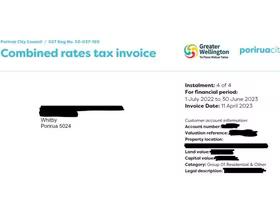
No easy way out of inflation conundrum for government
This opinion piece was first published in the Sunday Star Times and Stuff on 22 May 2022.
Treasury warned this week that “Inflation has surfaced as the principal economic challenge in New Zealand and abroad”, reinforcing what households, businesses, and increasingly the government have become acutely aware of in recent months. It’s getting more expensive to live, and that deeply personal cost to households when they go to the supermarket, fill up the car, or pay the rent trumps any other challenge out there.
In response to the fastest inflation in a generation, the Government this week announced a $1b temporary cost of living package, with the cuts to fuel taxes and half-price public transport extended until August, and a new $27pw Cost of Living Payment from August to October for 2.1m lower income earners.
Give inflation an inch and it’ll take a mile, a problem that Governments around the world are facing as households pay the price for Central Banks moving too slowly to address rising costs as economies found their feet again. For inflation, as with most problems, there are no easy and costless solutions. Finance Minister Grant Robertson is walking a tightrope between a rock and a hard place. Doing nothing is callous when people are struggling to make ends meet. But doing too much risks pouring more inflationary fuel on the bonfire already in front of us.
As usual, the end result is one that leaves everyone unhappy. Higher earners got nothing – but that was the point of targeted support, and they’ve got more choices over how to adjust their spending. Middle income earners will feel that $27pw is better than nothing, but not nearly enough to fix the budget problem. The lowest income earners are left wondering why they didn’t get a bigger top-up, given the pressure that their meagre budgets are already under. Treasury, IRD, and MSD are all left frustrated that their evidence-based advice was ignored and overridden in favour of ministerial direction.
Although the package might limit the grumbling for a few months, it sets up an even bigger challenge after October, and as New Zealand moves within a year of the next general election. Because inflation is not a problem that will go away any time soon. Treasury forecasts this week paint a grim outlook, showing inflation will stay higher for longer, peaking near 7%pa in 2022, staying above 5% until the end of 2023, and not getting below 3% until 2025. That more persistent inflation is also driven over the longer term by high non-tradeable (domestic-based) inflation, with the New Zealand economy still stretched to its limits.
The costs to households of higher inflation are considerable. In dollar terms, the increase in household costs expected over the three years from the start of 2020 to the end of 2022 are equivalent to total increase seen over the decade between 2010 and 2020. Back-of-the-envelope calculations show that, based on Treasury forecasts, inflation could add an additional $89pw to the average household’s weekly spending by the end of 2022 compared to a year earlier, and then another $64pw on top of that by the end of 2023.
Waiting for wages to rise to offset these cost increases might be an overly optimistic solution, as not everyone gets them. Stats NZ data shows that over the last 12 months, around two-thirds of jobs in the economy have seen a pay increase, with 36% of jobs not getting a pay increase. That’s the smallest proportion of people not getting a pay rise on record, but still leaves a lot of Kiwis without any boost to their incomes.
Future wage growth might also not be as strong as expected. Treasury expects wage increases to continue at elevated levels, despite net migration expected to return to positive levels in 2023, and for the unemployment rate to rise fairly rapidly to a peak of 4.8% in 2025. More people in the workforce, and more people looking for work, hardly creates the same pressure on pay as New Zealand is currently experiencing.
All of this begs the question: what’s next? Is it realistic to believe that households will be forced to go cold turkey in October, once the reductions in fuel prices end, and the cost of living payment finishes? Add to this the fact that the Reserve Bank will need to continue raising interest rates to wrestle inflation back under control, and household budget stress will continue to dominate headlines.
It seems more likely that despite this temporary support, there will be incredible pressure on further funding to alleviate some of the further inflation being faced. But the risk of further stimulus in an already constrained economy should not be forgotten. Getting the balance right will be incredibly difficult, both politically and economically. Do too little, and you’ll be seen as mean. Do too much, and you’ll make the problem worse.











